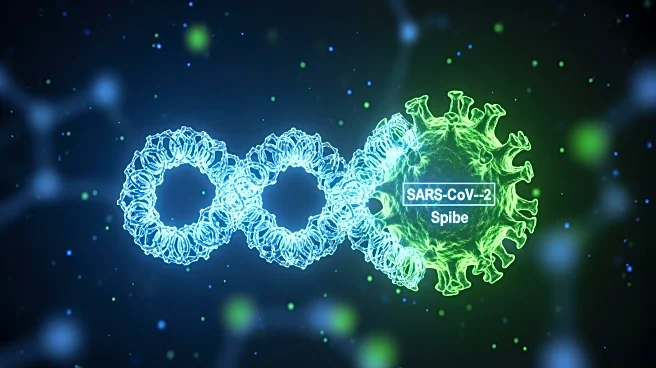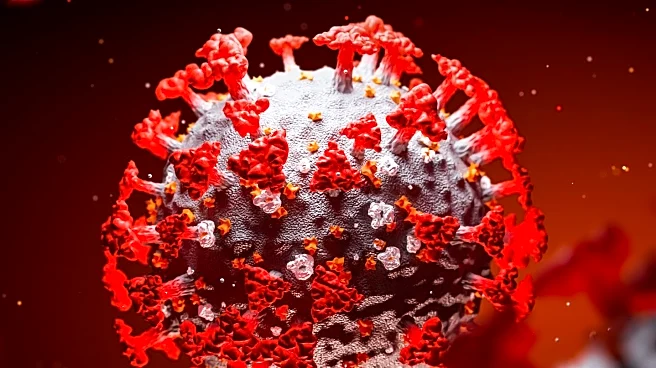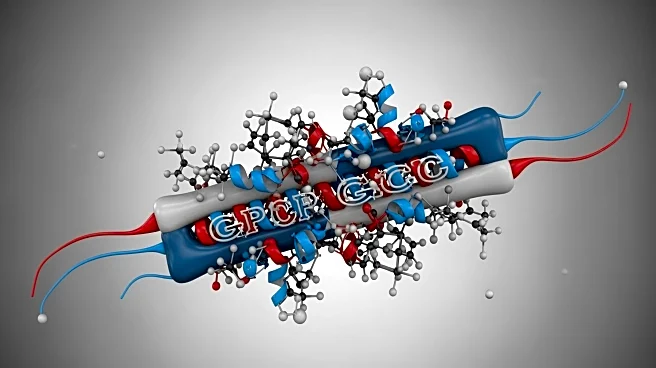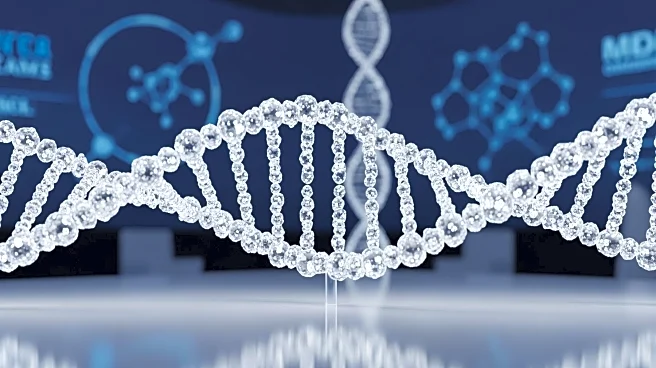What's Happening?
Recent advancements in protein sequencing have led to the development of a rationally designed ACE2 mimetic binder for the SARS-CoV-2 Spike protein. This innovation was achieved through in-silico single
residue substitutions aimed at improving helicity and binding efficiency. The study involved all-atom, ab initio molecular dynamics simulations to map the dominant energetic atom-atom interactions between ACE2 and the Spike protein's receptor-binding domain (RBD). The optimized peptide mimetics demonstrated improved binding to the Spike RBD, enhancing their potential as therapeutic agents against COVID-19. The research also addressed solubility issues by reducing the number of charged residues, thereby improving the peptides' dissolution in water. Experimental studies confirmed the effectiveness of these optimized peptides in binding to various SARS-CoV-2 variants, including the Omicron variant, without cellular toxicity.
Why It's Important?
The development of ACE2 mimetic binders represents a significant advancement in COVID-19 therapeutics, potentially offering a new avenue for treatment. By improving the binding efficiency and solubility of these peptides, researchers have enhanced their potential as effective inhibitors of the virus's entry into human cells. This could lead to more robust therapeutic options, especially in combating emerging variants of the virus. The research underscores the importance of molecular dynamics and computational optimization in drug development, highlighting the potential for these techniques to address complex biological challenges. The findings may also pave the way for future treatments targeting other viruses that utilize the human ACE2 receptor.
What's Next?
The research team plans to conduct further authentic viral inhibition tests against circulating Omicron sub-lineages and explore the effectiveness of the optimized peptides in pre-clinical animal models. These studies will help determine the peptides' pharmacokinetic properties and in-vivo stability, crucial factors for their potential use as therapeutic agents. The ongoing research aims to ensure that these peptides remain effective across future strains of SARS-CoV-2 and possibly other emerging viruses. The team is also considering parallel tests using known therapeutics like Remdesivir to compare efficacy.
Beyond the Headlines
The development of ACE2 mimetic binders highlights the ethical and scientific responsibility to advance therapeutic options during a global pandemic. The research reflects a commitment to addressing public health challenges through innovative solutions. It also raises questions about the accessibility and distribution of new treatments, emphasizing the need for equitable healthcare solutions. The study's reliance on computational methods showcases the growing role of technology in medical research, potentially influencing future drug development strategies.











